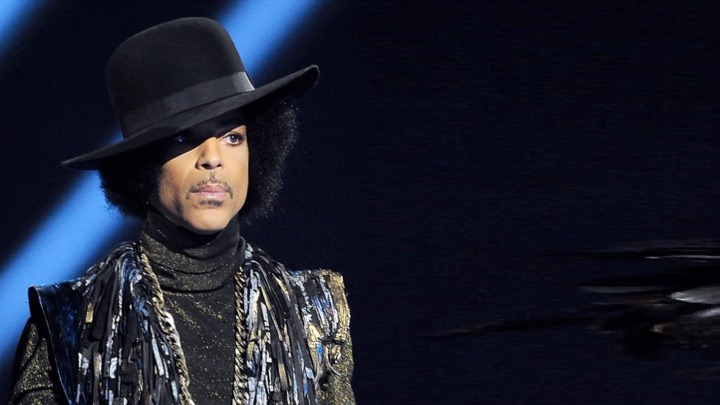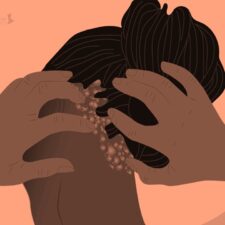
Prince Rogers Nelson, aka Prince, aka the “Purple One,” aka “His Purpleness,” aka “the Symbol,” aka “One purple bad mutha–shut your mouth,” will forever be remembered and adored for his music, his style and unapologetic way of bringing people together.
When Prince died on April 21, 2016, the world went purple.
The Eiffel Tower turned purple.
The Niagra Falls went purple.
The tallest building in Dubai went purple.
The White House went purple.
His purpleness still reigns even when he’s no longer here.
Paisley Park created a four-day event including performances from Thursday April 20-23, 2017 to mark the one-year anniversary.
At least five recent books have been published examining Prince’s life and legacy, including a memoir by his first ex-wife, Mayte Garcia. Prince tributes continue to be created, the most recent at the Grammys, where Bruno Mars did the honors and received glowing reviews for him paying homage to His Royal Badness.
But even after a whole year later, there are many questions left unanswered:
What Really Killed Prince?
He died April 21, 2016, in an elevator in Paisley Park in Carver County, Minnesota. The one-page autopsy report released later said he died of an accidental overdose of the opioid fentanyl.
Famously clean-living Prince died of a painkiller overdose at age 57? Unthinkable. Numerous friends, associates, relatives and former wives and girlfriends insisted they never saw him take drugs and it just doesn’t add up.
Was there some medical condition that contributed to his death? We may never know because, under Minnesota law, the full autopsy report can be kept secret for up to 30 years unless the next of kin agree to release it. So far, that has not happened.
Why was He taking Fentanyl and for How Long?
Where did he get it? Was it prescribed by a doctor or acquired by illicit means? Did he know some of the pills containing fentanyl were falsely labeled something else? What was the relationship between his death and the episode of six days earlier when he suffered a medical emergency on a plane? (It landed, he was rushed to a hospital and received overdose-style treatment.)
“There is some indication that his addiction went fairly far back, to the mid-1980s and into the late 1990s, but the evidence is ambiguous,” Hahn says. “It’s an incredibly murky picture. He was a very controlled and focused figure, he kept his cards close to the vest so that’s why we don’t know.”
What Does Fentanyl Do to the Body?
Fentanyl can be ingested orally and inhaled through the nose or mouth. Fentanyl can also be absorbed through skin, however, skin exposure is not expected to lead to toxicity due to its extremely poor penetration of the skin barrier.
Fentanyl comes in a variety of forms including, powder, liquid, and pills, and it’s seen in a variety of colors.
When a person is under the influence of fentanyl it can produce effects such as: relaxation, pain relief, sedation, confusion, drowsiness, dizziness, nausea and vomiting, pupil constriction, and respiratory depression.
It works in small doses. Only 2-3 milligrams of fentanyl can induce respiratory depression, arrest, and possibly death. 2-3 milligrams is approximately 5-7 individual grains of table salt.
Signs of fentanyl overdose may include, slow breathing or no breathing, drowsiness, disorientation, sedation, pinpoint pupils, skin rash, or clammy skin. Symptoms usually occur within minutes of exposure or ingestion. Fentanyl overdose lowers the heart rate and depresses the respiratory system.
If someone is suspected of ingesting or being exposed to fentanyl: seek immediate medical attention. If someone exhibits overdose symptoms, administer Naloxone (Narcan). If fentanyl was ingested through mouth or eyes and the person is conscious, rinse eyes and mouth with cold water. If there was skin contact with fentanyl, immediately wash the area with soap and water. DO NOT use hand sanitizer as it may increase absorption of fentanyl through the skin.
5 Facts You Didn’t Know About Prince
1. Prince had his very own color purple
A little over a year after Prince’s death, global color authority Pantone created a royal shade of purple in honor of him, in conjunction with the late singer’s estate. Appropriately, it is known as Love Symbol #2. The color was inspired by a Yamaha piano the musician was planning to take on tour with him. “The color purple was synonymous with who Prince was and will always be,” Troy Carter, an advisor to Prince’s estate, said. “This is an incredible way for his legacy to live on forever.”
2. Prince wrote a lot of hit songs for other artists
In addition to penning several hundred songs for himself, Prince also composed music for other artists, including:
- “Manic Monday”: Written for The Bangles and later credited to Christopher (Prince’s pseudonym).
- “Nothing Compares 2 U”: Written for The Family (and Prince’s band) and made famous by Sinéad O’Connor.
- “The Glamorous Life”: Written for Sheila E., who also recorded it.
- “I Feel For You”: Originally written for Chaka Khan.
- “Love… Thy Will Be Done”: Written for Martika.
- “Sugar Walls”: Written for Sheena Easton, credited to Alexander Nevermind (Prince’s pseudonym).
- “Yo Mister”: Written for Patti LaBelle.
- “When You Were Mine”: Written for Cyndi Lauper.
- “How Come You Don’t Call Me”: Written for Alicia Keys.
- “Stand Back”: Co-written with Stevie Nicks.
- “Jungle Love”: Co-written with Morris Day for The Time.
- “A Love Bizarre”: Written for Sheila E.
- “You’re My Love”: Written for Kenny Rogers, credited to Joey Coco(Prince’s pseudonym).
3. He used a marketing tip from Willy Wonka
The famous book that was turned into a number of hit movies, Charlie and the Chocolate Factory, was a favority of many kids around the world–including Prince. But in his adult life, Prince went back to the fictional character of Willy Wonka to promote himself and new music. In 2006, Prince had his label, Universal, hide 14 purple tickets—seven in the U.S. and seven internationally—inside Prince’s album, 3121. Fans who found a purple ticket were invited to attend a private performance at Prince’s Los Angeles home.
4. Prince was a father
Yes, Prince was a dad. Prince lost his only child – a son – just days after his birth. The boy, named Amiir Nelson, was born in 1996 to Prince’s first wife, dancer Mayte Garcia, with a rare genetic disorder and died just six days later. Instead of taking time out to grieve, Prince continued to promote his new album Emancipation, which featured songs about fatherhood. A recording of the child’s heartbeat is featured as part of the percussion on the track ‘Sex in the Summer’.
5. He has enough music to release albums for 100 years
Prince wrote and recorded music constantly, releasing 39 studio albums and 106 singles over his 40-year career. But that’s only a fraction of his vast creative output. When Prince died in 2016, archivists were granted access to a huge underground vault in his private Mineappolis estate Paisley Park – and they discovered enough unreleased material for the musician to posthumously release an album every year for a century.
Will other Prince music be released?
In 2024, there have been several new releases from Prince, including singles and a super deluxe edition of the album Diamonds and Pearls. These include “Silver Tongue”, “Magnificent”, “United States Of Division”, and the Diamonds and Pearls Super Deluxe Edition.
Here’s a more detailed look at the latest releases:
Singles:
Silver Tongue:
This single, released on May 24, 2024, is a cleaned-up and enhanced studio version of the track, available on all streaming platforms.
Magnificent:
This single was released on April 26, 2024, and has also been enhanced for 2024.
United States Of Division:
This virtual B-side was released on April 5, 2024, and is available on all streaming services.
Super Deluxe Edition:
Diamonds and Pearls Super Deluxe Edition: This edition was released on October 27, 2023, according to Goldies Parade.
In addition to these recent releases, the Prince estate has also released other vault material, including “7 (E Flat Version)” and “All A Share Together Now,” which are available on Apple Music.
Prince’s Effect on Music Today
Perhaps the most crucial ingredient in the development of the Minneapolis Sound was the community center The Way. Created after the civil unrest in the Near North neighborhood in 1966 and 1967, The Way was the cornerstone of local arts and music. Musically inclined kids from the Northside such as Prince, Terry Lewis, Morris Day, and André Cymone hung out with local musicians like Pierre Lewis and Sonny Thompson. They absorbed the rhythm and blues, soul, and funk grooves of the house band the Family, while playing on instruments The Way provided. They then took their skills to the street, playing in Battles of the Bands throughout the city.
The 1980s were the heyday of the Minneapolis Sound. Prince’s popularity grew with each album he released that decade — “Dirty Mind” (1980), “Controversy” (1981), and “1999” (1982) — and his striking looks, fashion, and dancing spurred MTV to play his videos in heavy rotation. He was such a prolific artist that he wrote more songs that his record label allowed him to release, so he created numerous side projects with artists like Morris Day and the Time (which included Jimmy Jam and Terry Lewis), Jill Jones and Sheila E. With no Number One hits and only one Top Ten album (“1999”), Prince pitched the idea of a major motion picture to accompany his fifth album to his label, Warner Bros. The movie and album “Purple Rain” were released in 1984 and were instant hits, making Prince an international superstar and putting Minneapolis on the musical map. During the last half of the 1980s and throughout the rest of his life, Prince continued to explore new musical styles, and evolved the Minneapolis Sound which had its effect on music worldwide. In the late 90s, after the “Prince-Effect” bands and guitarists used Prince’s signature electronic -infused sound in many of the top hits.








